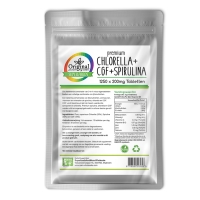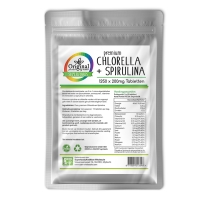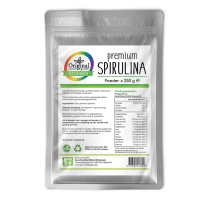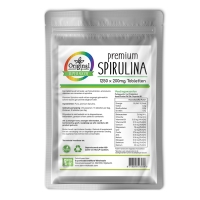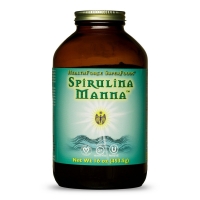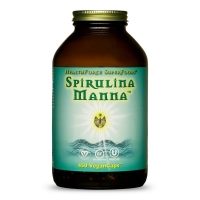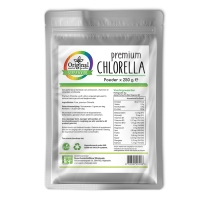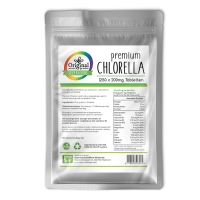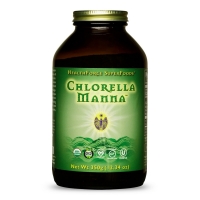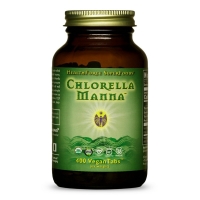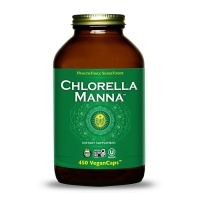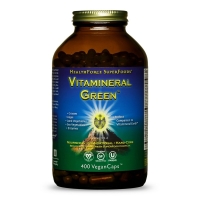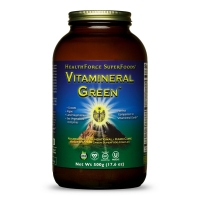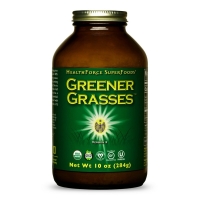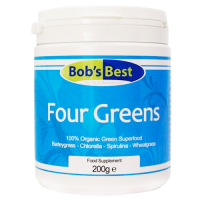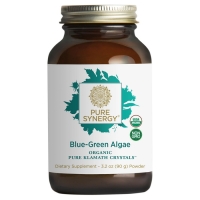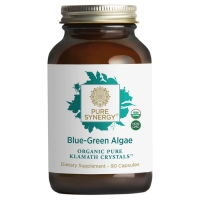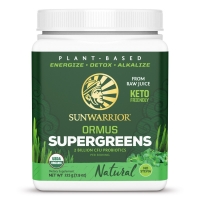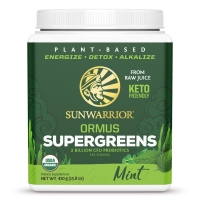and what the super healthy color green can do for you
Green is THE color we associate with nature, health, healing, and new life. Green is also the color of the heart chakra, which represents love and emotional balance. Finally, green also stands for environmental consciousness.
Green superfoods have made an enormous advance over the past decades and have become an essential part of the health world. Spirulina has been sold on a large scale as a superfood and nutritional supplement since the 1970s, thanks to the combination of traditional knowledge -- the Aztecs, the Mayans, and traditional African tribes already used Spirulina as a food source -- modern science, and the search for sustainable food sources. This was followed by other algae such as chlorella and the blue-green algae from Klamath Lake in the US.
While more and more superfoods from lakes and the sea were being discovered and transformed into supplements, Greens from the land were also on the rise. Sprouted seeds of grasses such as wheat, barley and legumes like alfalfa also have extraordinarily high levels and a wide diversity of valuable nutrients, which make them admirable contributors to overall health, the immune system, energy and hormone balance, libido and the ability to purify and detoxify the body.
And that's necessary in today's world!
As time progressed and the trend of Greens continued, we also began to notice plants closer to home. We discovered that besides the exotic, new superfoods from far away, there is also plenty to be found in our own environment that can be considered superfoods or super herbs.
So we have Greens from the sea, Greens from the land, and Greens from our surroundings. The selection is huge, I understand if you can't see the forest for the trees. Of course, there's that obvious similarity: the color green. Green also has a calming effect, so take your time to read and view the information below. And enjoy a matcha latte while you're at it ;-)
Chlorophyll, the green connecting factor
Chlorophyll is, in short, converted sunlight. It is a green pigment that plants, algae, and cyanobacteria use for photosynthesis, the process where CO2 and water are converted into glucose and oxygen with the help of light energy from the sun. Chlorophyll in plants is comparable to hemoglobin, the red pigment that transports oxygen in the blood, with the difference that hemoglobin needs iron and chlorophyll uses magnesium. Food with a lot of chlorophyll is therefore always rich in magnesium. But besides the physical substance chlorophyll, you also get sun prana when you eat chlorophyll-rich food. You're essentially eating light!
Overview of Greens
The big question now is 'What do you choose'?
In our opinion, Greens are for everyone and for every day. If you want to make good choices, consider the following:
- Read through the overview and see which Greens appeal to you or best fit your current situation. Choose those.
- Opt for variety: as you can read, each Green has its own unique properties. By alternating, you can benefit from all the different health benefits.
- Choose to combine. Unlimited Health has a large assortment of Greens and often the products contain multiple types. You can also combine different types yourself.
- Always choose high quality, i.e., unsprayed, harvested and processed under the best conditions, both cultivated and wild Greens have their advantages. Thankfully, with Unlimited Health, you don't have to worry about this.
- Eat Greens from your surroundings very regularly: dark green vegetables contain the highest levels of chlorophyll and especially in spring, a weekly visit to the forest is not only very pleasant for body and mind, but meanwhile you can pick the emerging, fresh Greens, such as cleavers. Below is a recipe for inspiration.
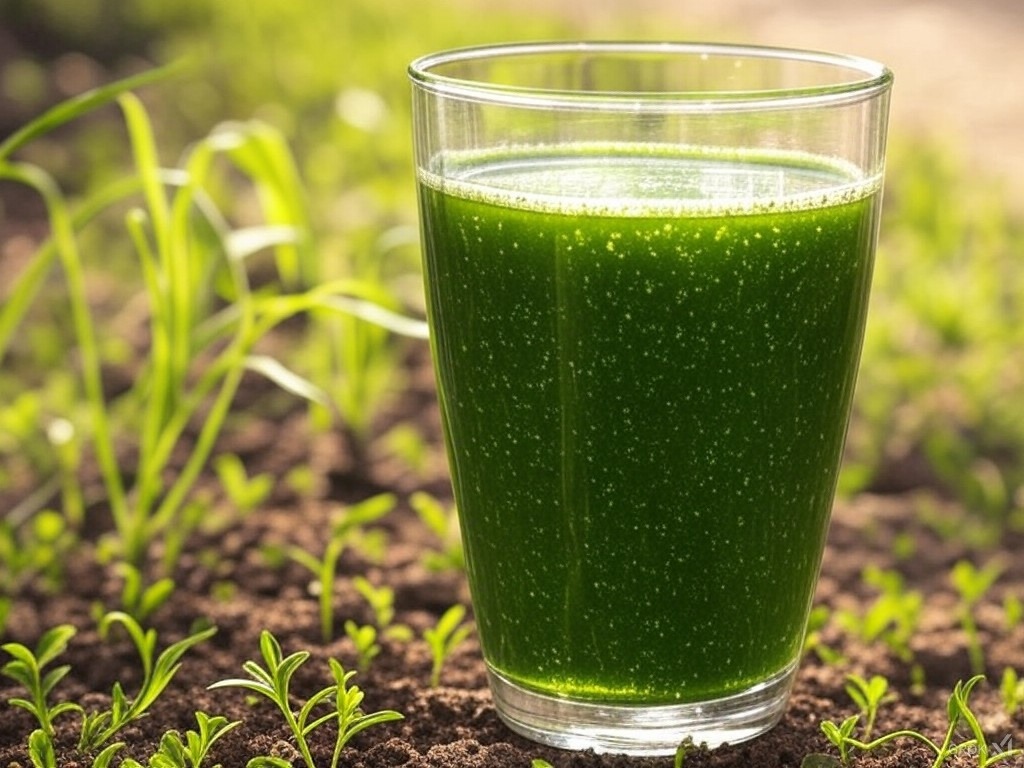
Recipe: Cleavers Juice Shot
Cleavers juice is reminiscent of a wheatgrass shot and doesn't fall short of its cultivated relative. The taste is fresh, grassy, and a little sweet. You pick cleavers in spring.
For a shot you need:
3 handfuls of young cleavers (about 75 grams), preferably the tops
Wash the cleavers
If you have a slow juicer, add water tablespoon by tablespoon to make it easier to process.
If you use a blender, chop the cleavers finely and blend with a splash of water until very smooth. Pour it through a fine cloth before drinking. You can also add it to a smoothie and combine it with, for example, apple, pear, ginger, and nettle.
The recipe is from the book 'In Het Wild' by Yvette van Boven
Enjoy Green!
Unfortunately, we cannot share everything about Greens here that we would like to. This is due to European claims legislation. For questions, you can always call or email.
Special Offer - 10% Discount!
Boost your health routine with our premium greens collection! Take advantage of 10% off the entire Greens category with code GREENS10. Whether you're just starting with greens or want to replenish your favorites, this is the perfect time to benefit. Valid until February 28, 2025, while supplies last.
Sources:
- Natural chlorophyll: a review of analysis methods, health benefits, and stabilization strategies: Critical Reviews in Food Science and Nutrition: Vol 0, No 0 - Get Access
- David Wolfe (2012). Superfoods. Food and medicine of the future. Uitgeverij Succesboeken.nl
- Juglen Zwaan (2013). The Supplement Guide. Uitgeverij Succesboeken.nl
- Marlies Engels (2021). Herb and Human.
This article was written by Terah Afke Beek. Visit her website for more inspiring content: terah-pi.nl
terah-pi.nl



